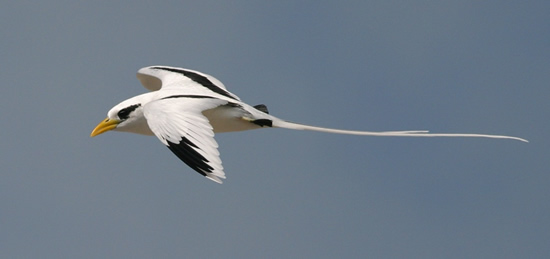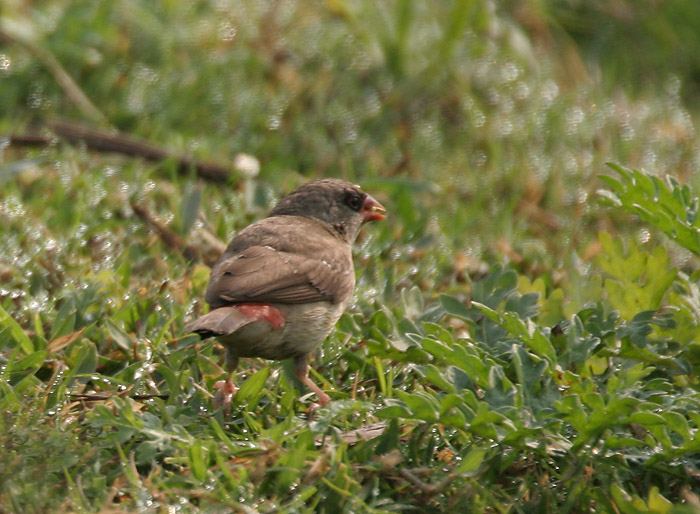White-tailed Tropicbird
White-tailed Tropicbird is an inhabitant of the tropical seas. This bird often flies deep into oceans, searching for food. The bird’s flight is elegant, filled with acrobatic moves. Its a pleasure to watch the Tropicbird fly in the sun, and even its Latin name Phaeton lepturus comes from a Greek myth about Phaeton, who wanted to drive his father’s sky-wheels, but eventually failed and caused a fire in the sky – likewise this bird also seems to be trying to reach the sun.
The bird is medium-sized, with a length of 35-45 cm and a 1 metre wide wing span. Flock is white, with black parts on wings and eyes. A specific detail is the pair of two markedly long feathers at the end of the tail. Not only they make the bird look gracious when it’s flying, but they also add for stability and control, allowing the bird to maneuver more agile in the air, much like the steering control of aircrafts.
White-tailed Tropicbirds spend most of their time flying over open seas. They fly hundreds of kilometres searching for food, exploring more and more new territories. The flight of these birds is a spectacular view, as they elegantly and slowly flap their wings and freely soar in the air. If the Tropicbird wants to rest, it lands on the surface of the water, where it floats with ease, just like a cork, while keeping the long tail feathers up in the air to avoid wetting them.
White-tailed Tropicbirds feed on small or medium sized fish, squids and octopuses. The exact species eaten varies on the season and on the area the bird flies through. The bird usually circles around spotted prey and then quickly nosedives into the water, catching the fish in lightning speed. The impact against water is softened by special air pouches under skin, and these pouches also help emerge above water after diving in. Thanks to the excellent acrobatic skills, the Tropicbird can also catch flying fish.
The Tropicbirds don’t have a regular mating period. Eggs are lain every 9 months, although nesting can be postponed in case of bad weather. The otherwise solitary birds meet in special rut areas and in case of mutual sympathy, they find an island to nest on.
Preparation of the nest begins already 2-6 weeks before the single, white egg is lain. The parents feed the hatchlings for 70-80 days and only then can they start flying. As the parents spend most of their time flying and looking for food, the young Tropicbirds are completely defenseless for more than two months. If they manage to survive this, they are ready to start independent lives and they leave the parents’ nest soon after they learn to fly.




